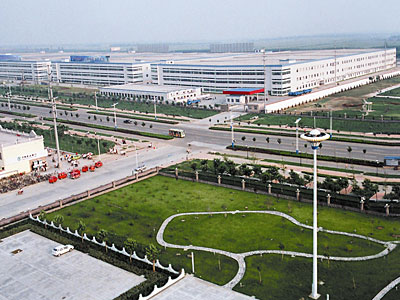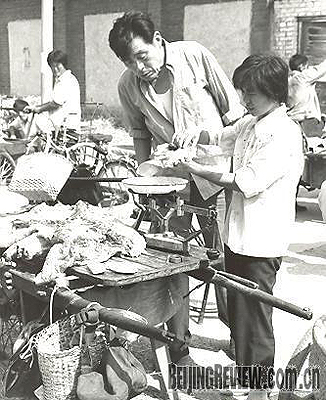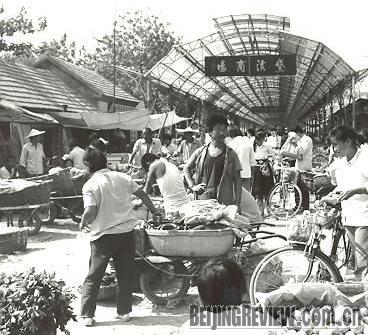|
|

INDUSTRIAL BASE: The industrial sector contributes 90 percent of Zouping's GDP. This photo shows the Zouping Economic Development Zone (XIA YINGLU) |
Zouping, a small county in Shandong Province, is a vivid example of a rural area that has undergone dramatic changes during the past three decades of China's reform and opening up. It takes about 40 minutes to get there by car, driving northeast from the provincial capital city of Jinan.
Zouping, with a population of 720,000 and a total area of 1,252 square km, is typical of more than half of China's 2,800 counties. Yet, as an agricultural county that has quickly urbanized, it is the only rural area that has a research site for foreign scholars. For the past 22 years, the county has been an important window through which the scholars can learn about rural development in China, although foreigners today can go anywhere in China's countryside.
When Xia Yinglu, Deputy Director of the Zouping Information Office, came to Beihe Village a second time in November, he got lost among the houses and villas that had been built in the previous two years. He finally found his way to the village committee's headquarters, thanks to phone directions provided by Yan Shengqing, a former village leader.
Quick-witted and precise, Yan is a well-known person in Zouping, and his family has played host to former U.S. president Jimmy Carter during his research trip to Zouping in July 1997. At that time, Yan and his family were selected as one of the villages' "10-star households"--a status conferred upon homes in rural areas that exemplified all the virtues of modern Chinese society. After understanding the appraisal and evaluation process, Carter had joked that he could win only one star under such strict requirements.
|

LOOKING BACK: Street peddlers could be found everywhere in Zouping County seat three decades ago (By Courtesy of XIA YINGLU) |
 OLD MARKET: Vendors at Daxi marketplace in Zouping County seat in the early 1980s (By Courtesy of XIA YINGLU)
OLD MARKET: Vendors at Daxi marketplace in Zouping County seat in the early 1980s (By Courtesy of XIA YINGLU) | Beihe village committee's offices are in a two-story building beside a string of villas. Across from the villas and separated by a concrete pavement stand several apartment buildings. All these comprise an urban neighborhood, except for the village committee building, which is more than 10 years old and looks somewhat humble and shabby compared with the brand-new dwellings.
On the left side of the committee building, there are much shabbier single-story houses. Built two or three decades ago, most of them are now vacant. Yan used to live in one of them, but a year ago his family moved into a new two-bedroom apartment more than 80 square meters large.
In one room of the village committee building, several business owners have a discussion. Private businesses in Beihe Village cover timber processing, animal husbandry and iron making. Yan opened a small malt plant and hired more than 100 people after he retired from his post as village head in 2004. Beihe has a population of 1,000, and most members of its labor force work in the village factories and farm their plots of land after work. The village's annual per-capita income is around 10,000 yuan ($1,454), more than 100 times the amount three decades ago, Yan said.
|
